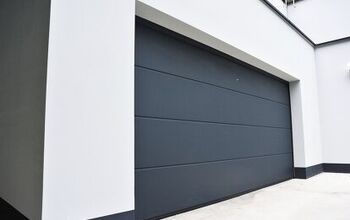How To Lock A Sliding Glass Door From The Outside

In general, sliding glass doors are typically locked from the inside and not the outside. This is because they are not intended to be used as entrance doors, even though many people use them as the primary way to enter their homes. However, the good news is that there is a way around this! So, how do you lock a sliding glass door from the outside?
Should you wish to have the ability to lock your door from the outside, you will need to install a lock and key. While this seems inconvenient, it will provide added security and help prevent intruders from entering your home. It can also be used to prevent young children from opening the door.
By installing a lock and key, you reap many more benefits than just the ability to lock your door from the outside. In this article, we will provide a step by step guide on how to install a lock onto your sliding glass door. We will also discuss this arrangement’s added benefits and tell you about a few more security measures you can take.
Do You Need Sliding Door Installation Services?
Get free, zero-commitment quotes from pro contractors near you.

Installing An Exterior Keylock For Your Sliding Glass Door
Sliding glass doors are typically only lockable from the inside; they are not used as entry doors. However, you may decide to use your sliding glass door as a standard entry point, in which case you might want to think about installing a key lock so the door can be unlocked from the outside. A second lock can also be installed on the outside of the door for added security against intruders or to keep small children from opening the door.
Instructions
- Wash your door. Using a solution of hot water and soap, wash the door frame. You will want to ensure you get all the dirt and dust off the door and out of the frame. When you are finished washing, you can let it air dry. Or, use a towel to wipe up the moisture and dry the door and frame it quicker.
- Find the correct spot. Placing your ear close to the door, knock it with the plastic end of a screwdriver until the knocking sound changes. This means that there isn’t any glass behind the doorframe.
- Mark the spot. When you find the place where there is no glass, mark the spot using a marker or chalk piece. Afterward, you will need to place your lock against the site and mark the safety and where the screws will enter the door.
- Mount the lock. Put a metal punch over the spot you’ve marked on the frame. Hit it gently with the hammer, making a hole. Drill it until the lock sits firmly inside. Also, take the time to drill any holes required for the screws that will secure the safety. Fix the lock firmly in place with mounting screws.
- Install the latch plate. After you’ve mounted the lock, you will need to install the latch. Make a mark for the latch plate on the door frame. Drill the required holes and fix the latch plate to the door frame.
- Check that the lock is working. If the lock isn’t working, you may need to adjust the latch’s location to ensure it’s entering the proper spot to lock your door.
Installing A Sliding Glass Door Lock For Added Protection
A sliding door lock is the most effective way to secure your sliding glass door. This type of lock is located at the top of the door, at the stationary glass’s meeting point, and the sliding glass door. While it’s typically meant for interior use, you can find some that require a key to unlock, which means you can install it outside as well.
Sliding door locks are used in addition to the other door locks. An advantage is that they can only be opened by adults or older children who are tall enough to reach. They also prevent anyone from using a jimmy to budge open the door, either from the interior or exterior. Typically, this kind of lock allows for two locking positions: One is fully locked, and the other will enable you to close the door 3 to 6 inches to allow some air to circulate.
Instructions
Depending on the type of lock you get, the instructions will vary significantly. We will provide you with a fundamental set of instructions to get a better idea of what’s involved in the process. Although, we do recommend you refer to your manufacturer’s instructions for the best outcome.
- Clean out the debris. Shut the door completely, clean any debris from the sliding door’s upper track.
- Mount the lock. Place the lock into position, and mark where you need to drill holes. Using a power drill, make the holes, and mount the lock onto the area.
- Mount the side piece. Secure the top part to the top track, and use the same procedure to fix the locking part onto the glass of the door. Check that the lock is entering into the other part of the contraption and that the key is working correctly.
Additional Safety Measures For Sliding Glass Doors
Install Additional Locks
Ideal’s Patio Door Security Bar with Anti-Lift Lock is easy to use. This is simply a bar on a hinge that will prevent the door from sliding open when in a horizontal position. Also, some locks can be fixed at the top or bottom of the door.
When a key is turned, these locks have pins that will move into the lower or top door frame and keep the door from sliding, even should the primary door lock be compromised breached. Double bolt locks can also effectively increase the security of your sliding glass doors.
Apply One-Way Film
Consider applying sheets of one-way film. These can be placed on the glass of your sliding doors, permitting you to see outside while preventing those outsides from seeing in. Instead, all they will see is their reflection in a mirrored finish. The only thing to keep in mind is that these products are only useful in the daytime, and at night you will still need to close curtains or window blinds.
Related Questions
Yes, there are smart locks for sliding glass doors. They are typically a surface-mount lock that is manufactured by the company Lockey, based in the USA. The most popular smart lock they have is Lockey 2500. You can program the lock, and it will lock your sliding glass door for you.
There are outdoor keypad locks that you can install for your sliding glass door. People often install these in addition to other types of locks for added security benefits. However, if you install a keypad lock with a hook bolt, you won’t need to put a stick in your door to keep it from opening.
The sliding glass door lock is usually activated by a spring. When you open the door, the spring inside the bolt contracts, allowing the door to open. Once you close the door, this activates the spring, and it is then released, causing the door to lock.
Do You Need Sliding Door Installation Services?
Get free, zero-commitment quotes from pro contractors near you.

Our Takeaway
Security is essential, which is why you need the ability to lock your sliding glass door from the outside. Whether the reason is to protect children, or protect your home from intruders, installing a lock on the outside of your sliding glass door is vital. However, it’s essential that you add additional security measures when installing a lock for maximum benefit.
When shopping for locks, take the time to read the features of each. Some of the locks have an alarm included so that when it’s activated, it will alert you if someone is coming in the door. No matter what you choose, make sure that it’s a product you can operate efficiently. Don’t go buy a smart lock if you aren’t familiar with these types of products. Installing a product you’re not familiar with can put you at risk, defeating the purpose of the lock.
Related Guides

Heather is a passionate writer who loves anything DIY. Growing up, she learned everything from home repairs to design, and wants to share her tips with you. When she's not writing, she's usually hiking or searching for her next DIY project.
More by Heather Robbins














![Finishing Basement Without Permit [Is It Really Illegal?]](https://cdn-fastly.upgradedhome.com/media/2023/07/31/9070078/finishing-basement-without-permit-is-it-really-illegal.jpg?size=350x220)












